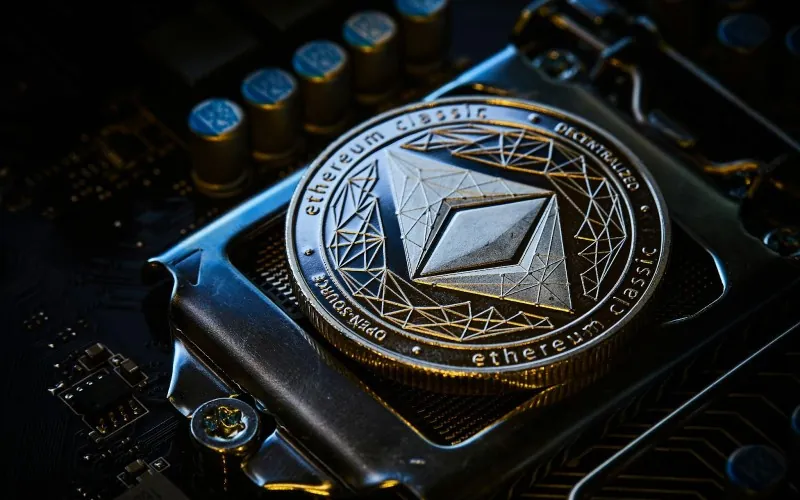Since its inception, blockchain technology has advanced significantly. What started as the foundation for Bitcoin has evolved into a multifaceted ecosystem with countless applications across various industries, from finance to supply chain management, healthcare, and gaming. As demand for faster, more secure, and scalable blockchain solutions grows, the next generation of blockchain platforms is beginning to take shape, promising to address the challenges faced by earlier systems and create a new era of decentralized technology.
One area where blockchain technology is rapidly gaining traction is in the online gaming industry, specifically in the realm of eth casinos. Ethereum-based casinos and gaming platforms offer players a decentralized, transparent, and more secure way to enjoy their favorite games while participating in the broader cryptocurrency ecosystem. As blockchain technology advances, however, there is a shift toward improving scalability, reducing transaction costs, and enhancing the overall user experience, which is where the next-generation blockchain solutions come into play.
The Need for High-Performance Blockchains
The increasing adoption of blockchain technology has revealed several limitations of earlier platforms, especially in terms of scalability, transaction speed, and energy consumption. Bitcoin and Ethereum, while groundbreaking in their own right, face challenges that hinder their ability to meet the needs of mainstream industries and users.
1. Scalability: As the number of users and transactions grows, traditional blockchains like Bitcoin and Ethereum struggle to maintain performance. The decentralized nature of these networks means that each node has to process every transaction, leading to bottlenecks and slower confirmation times. The scalability issue is particularly evident during times of high demand, such as in the case of crypto casinos that require a constant stream of transactions.
2. Transaction Fees: High transaction fees, particularly on the Ethereum network, can be a barrier for many users. When the network is congested, users are forced to bid higher amounts to have their transactions included in the next block, leading to unpredictable and often expensive costs. This issue has caused a shift in interest toward alternative blockchains that offer lower fees and faster confirmation times.
3. Energy Consumption: Many blockchain networks, especially those based on proof-of-work (PoW) consensus mechanisms, require large amounts of computational power to secure the network. This has led to concerns about the environmental impact Critics argue that Proof of Work (PoW) in blockchain technology consumes too much energy, which contributes to global warming.
Key Areas of Focus for the Next Generation of Blockchains
To address these issues, the next generation of blockchain platforms focuses on several key areas: scalability, security, interoperability, and energy efficiency. Let’s explore each of these in more detail.
1. Scalability Improvements: Sharding and Layer-2 Solutions
Scalability is one of the most significant challenges facing traditional blockchains. High-performance blockchains of the future must be capable of handling millions, if not billions, of transactions per second (TPS) without compromising security or decentralization.
- Sharding: One of the most promising solutions for scalability is sharding, which involves splitting the blockchain network into smaller partitions (called “shards”). Each shard processes its transactions, reducing the workload for individual nodes and enabling the network to process more transactions in parallel. Ethereum 2.0 is set to implement sharding as part of its long-term roadmap, potentially enabling it to process thousands of transactions per second.
- Layer-2 Solutions: Layer-2 protocols such as the Lightning Network (for Bitcoin) and Optimistic Rollups (for Ethereum) allow for off-chain transactions that are later settled on the main blockchain. This method reduces congestion on the base layer, lowers fees, and increases transaction speed. Layer-2 solutions have become particularly popular in the decentralized finance (DeFi) space, where rapid, low-cost transactions are essential.
2. Energy Efficiency: Proof-of-Stake and Alternative Consensus Mechanisms
The environmental concerns surrounding blockchain technology have prompted the development of more energy-efficient consensus mechanisms.
- Proof-of-Stake (PoS): One of the most significant transitions in blockchain technology is the shift from proof-of-work (PoW) to proof-of-stake (PoS) consensus. Ethereum’s transition to Ethereum 2.0 is a prime example of this shift. PoS eliminates the need for miners to compete for the right to validate transactions, replacing the computationally intensive process of mining with a system where validators are chosen based on the number of tokens they hold and are willing to “stake” as collateral.
- Other Consensus Mechanisms: There are several other consensus mechanisms being explored, including Delegated Proof-of-Stake (DPoS), Practical Byzantine Fault Tolerance (PBFT), and Proof-of-Authority (PoA). Each of these has its trade-offs in terms of decentralization, security, and scalability, but all aim to offer more energy-efficient alternatives to PoW.
3. Interoperability: Bridging the Gap Between Different Blockchains
With the growing number of blockchain networks, one of the key goals for the next generation of blockchain solutions is interoperability: the ability for different blockchains to communicate and exchange information seamlessly. Interoperability is crucial for enabling a truly decentralized internet of value, where users and applications can freely interact across multiple blockchain ecosystems.
- Cross-Chain Communication: Several projects are already working on solutions to enable cross-chain communication, allowing users to transfer assets and data across different blockchains. For instance, Polkadot’s relay chain and Cosmos’ IBC (Inter-Blockchain Communication) protocol are designed to facilitate communication between otherwise siloed blockchain networks.
- Atomic Swaps: Another promising innovation is atomic swaps, which allow for the exchange of one cryptocurrency for another without relying on a centralized exchange. By using smart contracts to facilitate peer-to-peer exchanges, atomic swaps eliminate the need for trusted intermediaries, further enhancing the decentralized nature of blockchain technology.
4. Privacy and Security: Protecting Data in the Age of Decentralization
With the rise of AI-driven cyber threats, such as automated phishing, deepfakes, and intelligent malware, blockchain platforms must evolve to counter increasingly sophisticated attack vectors. Integrating AI into blockchain-based cybersecurity frameworks can help detect anomalies, automate threat response, and strengthen system resilience.
- Zero-Knowledge Proofs (ZKPs): Zero-knowledge proofs allow for the verification of a transaction without revealing any details about the transaction itself. This feature can enable private transactions while still maintaining the integrity of the blockchain. Projects like Zcash and the upcoming Ethereum zk-rollups are utilizing ZKPs to offer increased privacy.
- Secure Multi-Party Computation (SMPC): SMPC allows multiple parties to compute data collaboratively without exposing their individual inputs. This feature can be used in decentralized finance applications to perform secure calculations without revealing sensitive user information.
A Bright Future for Blockchain Technology
As we move forward, the next generation of blockchain solutions will continue to address the scalability, energy efficiency, security, and interoperability issues that have hindered earlier systems. With advancements in technologies like sharding, PoS, and cross-chain communication, blockchain platforms are becoming more capable of handling the demands of modern applications, including those in industries like gaming, finance, and supply chain management.
For those interested in the intersection of blockchain technology and gaming, platforms like eth casinos are offering a glimpse into the future of decentralized entertainment. As blockchain technology continues to evolve, we can expect more innovations to emerge, creating exciting new possibilities for both developers and users alike.


